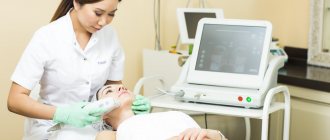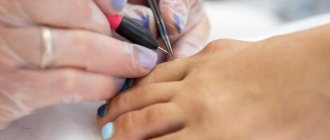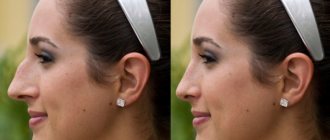The shape of the ears, like most parts of the human body, has its own standards of beauty. These standards are not the same: they change over time and in different countries the attitude towards the shape of the ears is different.
For example, in Japan, owners of protruding ears will never hide them - this is a sign of beauty and sensuality. In Korea, protruding ears are also considered a sign of prosperity and wealth. What can we say about some peoples of Africa, where the ears withstand a huge load in the form of jewelry, pulling back and increasing the size of the lobe five times.
Meanwhile, in our latitudes, a lop-eared person rather brings a smile. It is no coincidence that people here often turn to plastic surgery. Modern aesthetic surgeons have raised the standards of beautiful ears to precise mathematical calculations, describing, for example, what the angle should be between the auricle and the skull, and how the earlobe should be positioned. Yuri Mirzabekyan, a plastic surgeon at the Institute of Plastic Surgery on Tsvetnoy Boulevard, will talk about these and other details, as well as how ear plastic surgery arose and how it is performed .
Preoperative preparation of the patient
In the preoperative period, the patient undergoes blood tests (general, for the presence of syphilis, hepatitis viruses and HIV). If the operation is performed under anesthesia, then an additional biochemical test of blood and urine is taken, an ECG and fluorography are performed. 2 weeks before surgery, it is not advisable to take drugs that affect blood clotting (for example, aspirin, cough suppressants). When performing general anesthesia, it is necessary to spend a day before the operation on a “fasting” day (light food in small quantities), and in the morning before the operation, do not eat or drink anything. The day before surgery, wash your hair.
Types of otoplasty
- aesthetic (when the shape of the ears changes or they are given a more aesthetically correct appearance);
- reconstructive (restoration of a completely or partially absent auricle, both after congenital pathology and after injury);
- decorative otoplasty (a type of body modification, a newfangled trend in which “elven” ears with pointed ends are created).
Regarding decorative otoplasty, most plastic surgeons speak very coolly: from an aesthetic point of view, such an operation is not justified. Nevertheless, this operation has fans, and a number of clinics perform them. Doctors immediately warn those who want to have pointed ears: think about this in a calm mood, because you will get elven ears forever. This is a full-fledged surgical intervention - with anesthesia, a postoperative period, and you will have to take care of the stitches and give up your usual lifestyle for a while. Besides, if you suddenly want to return your ears to their previous shape, it will be impossible.
Reconstructive surgery of the outer ear corrects such defects as the already mentioned anotia - complete or partial absence of the ear due to injury or prenatal causes, various rudiments of the ear. This type of surgery often uses “donor” sites from other parts of the body, such as rib cartilage or cartilage from another ear. In our country, reconstructive operations have become widely developed and widespread. The main reason is that powerful military operations took place in our country, and people returning from the front often had combat injuries that also affected their ears.
There are more than 170 methods by which this deficiency can be corrected, and each doctor chooses a specific one for himself or practices using a complex of elements from different methods. It happens, for example, that the severity of protruding ears differs on the right and left, so the elements of the operation used to correct one ear and the other may also differ.
The traditional method of performing the operation involves the use of a scalpel. There is also laser otoplasty, in which incisions are made with a special laser. This process occurs much faster, and in addition, the likelihood of complications is reduced.
Note: plastic surgeons are most often approached by people who want to correct protruding ears - unilateral or bilateral. The cause of protruding ears is underdevelopment of the antihelix of the ear, as well as an increased angle between the ear and head.
Many patients have their own vision of the ideal ear shape. Yuri Mirzabekyan gives an example when a person consulted doctors twice:
“Previously, this patient had bilateral protruding ears, he was operated on and the result of eliminating the protruding ears was quite satisfactory to him. However, he did not like the size of his ears: he had so-called macrotia, large ears. I can’t say that the size of his ears went far beyond aesthetic standards or anthropometric data. But we met the patient halfway - we reduced his ears, and he was satisfied.”
Note: the shape and size of the auricles with protruding ears are within normal limits, only the auricles are located not exactly parallel to the temporal region, but more at a right angle. The ideal angle between the auricle and the head is 30 degrees.
Postoperative period
- hospital stay under the supervision of a doctor on duty - 3 hours (the operation was performed under local anesthesia), 1 day (in case of general anesthesia)
- The stitches are removed on the 7th day, after 3 days you can wash your hair
- wearing a compression bandage around the clock for 10-14 days
- for 3-6 weeks, a pressure bandage is worn at night (the bandage is placed on a cotton pad, this protects the cartilage from deformation)
- limiting heavy physical activity for 10–14 days after surgery
- swelling of the skin reaches its maximum 2-3 days after otoplasty, then it begins to decrease and finally disappears within 3-4 weeks
- in the first month after surgery, the sensitivity of the skin of the ears may be reduced
- You can start playing sports with intense physical activity after 2 months
Source: Medical
Is it possible to correct the shape of the ear without surgery?
The formation of the ear occurs in the fetus already in the first trimester of pregnancy, then around the sixth month the internal folds and relief of the auricle develop. When a child is born, protruding ears are clearly visible, and already during this period it is possible to correct this defect with the help of swaddling and hats, without surgical intervention. If you manage to fix the ears that require changes, they will take the correct shape, because cartilage is quite pliable. Such correction is possible up to six months of age. After this, surgery is no longer possible.
What is the difference between laser otoplasty and traditional surgery?
In surgery, a laser beam performs the function of a traditional scalpel due to the ability of the laser to cut through the skin and cartilage tissue. In addition, laser otoplasty uses the ability of the laser to heat cartilage plates in order to change their shape and position. Cartilage that has been heated can be transformed; it easily takes on the desired appearance and position relative to the head. The laser beam, due to its ability to excise tissue, makes the cartilage plate thinner and allows you to remove the desired volume where it is needed.
Laser ear correction takes place practically without blood, since one of the valuable properties of a laser beam for surgery is its ability to coagulate (glue) blood vessels and “seal” the seam due to the high temperature of the radiation. This same property of the laser allows you to minimize the risk of infection or inflammation due to instant cauterization and disinfection of the treated area.
Laser otoplasty is an operation that has a shorter recovery period, since the laser beam helps to activate the healing and regeneration processes in tissues. The painlessness of the operation is another advantage that laser ear surgery has over traditional surgery using a scalpel.
The operation leaves virtually no visible traces of the intervention, and after a year the thin strip completely disappears.
The use of a laser in otoplasty allows subsequent re-operation if adjustments are necessary or the client wishes to improve the previous result.
Can there be complications after surgery?
Doctors include polychondritis as an unpleasant consequence of otoplasty, which is an inflammation that affects cartilage and connective tissue. Presumably, the nature of this inflammation is autoimmune. Possible wound suppuration and poor healing.
Surgeons must be careful to ensure that there are no bruises at the surgical site because this impairs healing. Much depends on how well the patient takes care of the sutures in the postoperative period. In general, with this intervention, general surgical complications are possible.
As for the aesthetic side of the issue, in practice, correction of the ears is not the simplest process, requiring a special sense of symmetry and the right approach, which, as a rule, only experienced plastic surgeons have.
Surgery technique for protruding ears
The following types of techniques are used:
in the area behind the ear. Exclusive fixation of cartilage without surgical intervention is used quite rarely. This operation is possible only for minor defects.
Fixation of cartilage to soft tissues- Excision of a section of cartilage with further formation of the correct shape of the auricle. After which the posterior surface of the cartilage is exposed and the auricle is fixed in several directions to the mastoid process of the temporal bone. This technique is the most effective, thanks to which you can achieve lasting cosmetic results.
Video: animation of otoplasty for protruding ears
Plastic surgery of earlobes
- The most common abnormalities of the lobe are those in which its hypertrophy (presence of excess tissue) is pronounced. In this situation, the so-called shaped resection technique is used, during which excess tissue is simply excised and the required shape is formed.
- For an ingrown lobe, the Proskuryakov method is effective, thanks to which the free edge of the lobe is formed quite easily.
- A more rare option is the absence of urine or its underdevelopment. For this type of defect, techniques using the skin of the cervical region and cutting out flaps from adjacent tissues are successfully used.
earlobe plastic surgery, on the left – before surgery, on the right after surgery
Ear plastic surgery for rare developmental anomalies
In rare cases, such anomalies as severe underdevelopment (microtia), or absence of the auricle (anotia), curled, ingrown ear, etc. occur. Considering that these developmental defects in most cases are combined with a violation of the anatomical structure of the middle and inner ear, such operations are more serious in nature than cosmetic. Such surgical interventions should be performed by highly qualified doctors in highly specialized centers.
Are there any beauty standards for perfect ears?
If we talk about aesthetic standards for the fit of the ears to the head, then it is traditionally believed that the distance between the skull and the edge of the ear should be about two centimeters, and the angle between the ear and the temporal part should be about 30 degrees. In this case, the ear should run parallel to the cheek. Of course, these are very approximate anthropometric data, and in practice, perhaps no one can boast of perfect ears. After all, a person is asymmetrical, and you will see noticeable differences even when comparing the left and right sides of the body, the same applies to the ears. As for their shape, the contours of the ear are so unique and individual that they can be compared to the pads of the fingers.
Indications
Otoplasty is performed if the patient wants to eliminate protruding ears, asymmetry of the shells or other external defects. Today, young people often turn to surgeons who want to sharpen the upper tip of the shell or change any parameters of the lobe.
The main indications also include:
- Small and large ears
- Birth defects of various types (protruding ears, protruding ear, “macaque ear”, etc.)
- Acquired defects and consequences of injuries (ruptures and deformations, wearing tunnels, etc.)
Can ears protrude again after otoplasty?
“I always like to say that surgery is a little more accurate than religion. It is impossible to predict 100% that everything will be the way we want. It often happens that nature intervenes in the process and one ear may, over time, protrude a little more than the other. Therefore, it happens that we make a slight correction,” summarizes Yuri Mirzabekyan.
An experienced doctor resorts to slight hypercorrection, with the aim that the ear will “move away” a little during the recovery period, already in the process of otoplasty. In this case, you shouldn’t squeeze too much, because some patients, for example, wear glasses. And a tightly pressed ear does not look very aesthetically pleasing.
To see the final result of the operation, you need to wait until the swelling goes away completely. Therefore, a full photo from the “Otoplasty: before and after” series can be taken only after a few months. Sometimes it may seem to the patient that the ear is not positioned correctly, but in fact the reason for this may be uneven convergence of the swelling. In such cases, surgeons recommend not to panic, because even if correction is necessary, it will be minimal.
Advantages of the Century Clinic
- Reliability
The doctor has more than 20 years of experience in aesthetic (plastic) surgery. For a long time he has specialized in otoplasty. Performed more than 1000 operations.- Quality
The doctor knows the basic otoplasty , which he applies depending on the structural features of the auricle. He developed his own otoplasty technique.- Aesthetic result
The operation is performed, as a rule, from a 1-cm incision behind the auricle using the SURGITRON radio wave apparatus. This technique allows you to achieve an excellent aesthetic result: the ears after surgery have a completely natural shape, and the postoperative scar is practically invisible. since it is located in the newly formed fold.- Long-lasting results
The ear cartilage becomes thinner along the anterior surface, which is a key point to prevent recurrence of protruding ears.- Safety
We take into account all medical and legal aspects of patient safety before, during and after surgery.
How to prepare for otoplasty and are there any contraindications?
Otoplasty, of course, has contraindications.
“As a rule, these are general surgical contraindications or an allergy to a particular drug. There may be problems with oncology, problems with blood clotting. But this is being corrected, medications are being selected, there shouldn’t be any difficulties with this,” says Yuri Mirzabekyan.
Before the operation, you will need to undergo certain tests: they will depend on what kind of anesthesia the otoplasty will be performed under - general or local. The results of the tests are necessarily reviewed by the therapist, and only after that the date of the operation is set.
What is the cost of the operation?
The cost of surgical intervention depends on many factors : the severity of the ear defect, the qualifications of the doctor, the surgical technique, the status of the clinic, and the city.
For example, operations to eliminate protruding ears are much cheaper than complete reconstruction of the auricle for complex developmental anomalies.
It is necessary to take into account that the average cost of the operation depends very much on the city. In Moscow, the price for otoplasty starts from 30-40 thousand rubles, while in cities remote from the capital the price can be from 12 thousand.
A very important factor: the surgical method . The classic surgical method is cheaper than laser otoplasty. The price for ear correction using laser energy starts at an average of 40 thousand.
It is impossible not to take into account that an operation with a highly qualified doctor will cost more than with a novice specialist. However, it is still better to look for a specialist not by categories, titles and regalia, but by reviews (although filtering them should be approached with reasonable distrust).
Contraindications
Laser otoplasty is not performed if the patient has diseases of an autoimmune nature, oncology, or immunodeficiency conditions. Exacerbation of chronic infectious diseases and viruses is a contraindication to surgery. Inflammation of the skin near the operation site can also serve as a refusal to perform it. Laser ear correction is not prescribed during pregnancy, menstruation or any blood diseases. Contraindications include cardiovascular disease and hypertension, as well as high blood pressure on the day of surgery.
Otoplasty (ear plastic surgery): price
| Name of service | Cost, rub.) |
| Otoplasty | |
| From 2 sides | |
| 1st category of complexity | 40 000 |
| 2nd category of complexity | 50 000 |
| 3rd category of complexity | 70 000 |
| From the 1st side | |
| 1st category of complexity | 25 000 |
| 2nd category of complexity | 35 000 |
| 3rd category of complexity | 45 000 |
For detailed information on the cost of ear surgery (protruding ears, tunnel surgery, earlobe surgery), see our price list.
Material prepared by Efendiev Magomed Magomedovich











